Stanley is probably the smallest and most remote capital city in the world. The official existence of Port Stanley began in July 1845, when the islands’ capital was moved from Port Louis to an area originally called Jackson’s Harbour. It was situated on a north-facing slope in order to face the sun throughout the year.
A wide range of architectural styles prevails in the city, ranging from the magnificent brick-built Christ Church Cathedral to Jubilee Villas – an imposing terrace of four tall, red-brick houses with large bay windows, to the hospital and school with their colourful roofs and white-clad exterior. Upland geese and Falkland steamer ducks frequent the waterfront, while turkey vultures and kelp gulls glide overhead.

What to see and do in Stanley
Historic Dockyard Museum
The perfect starting point for a history lesson about Stanley, the Historic Dockyard Museum houses information ranging from the first settlers up to the present day.
Exhibits cover every aspect of life in the Falklands including the Falklands War and other conflicts, camp life, shipwrecks and natural history. There is a very poignant video playing in one room, showcasing interviews with islanders about their experiences during the war.
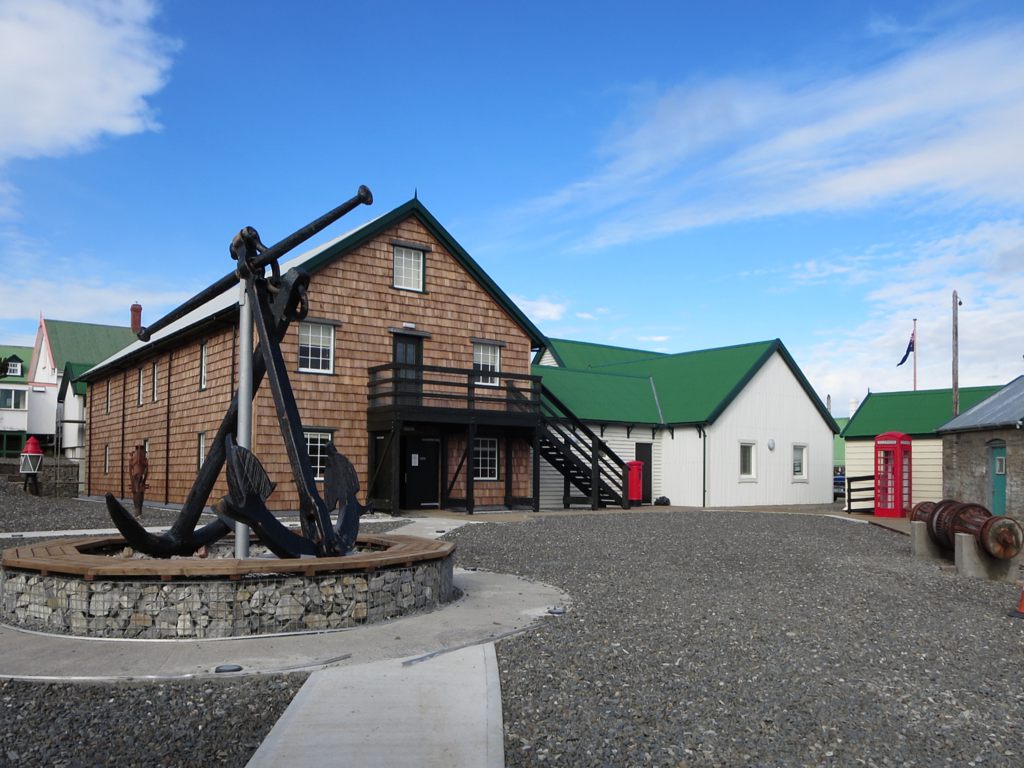
The main museum building is situated in an old store, one of the oldest buildings in Stanley, which dates back to 1843. The site beyond once included storerooms, workshops, a jail, a magazine (used for storing munitions) and a smithy, and many of these buildings have been restored to their former glory as part of the museum’s exhibits.
Liberation Monument
Paid for by public subscription and erected by volunteers, the Liberation Monument was officially unveiled on 14 June 1984. The military personnel who gave their lives to liberate the islands are remembered on the surrounding wall. Liberation Day, 14 June, is marked in the islands each year by a public holiday.
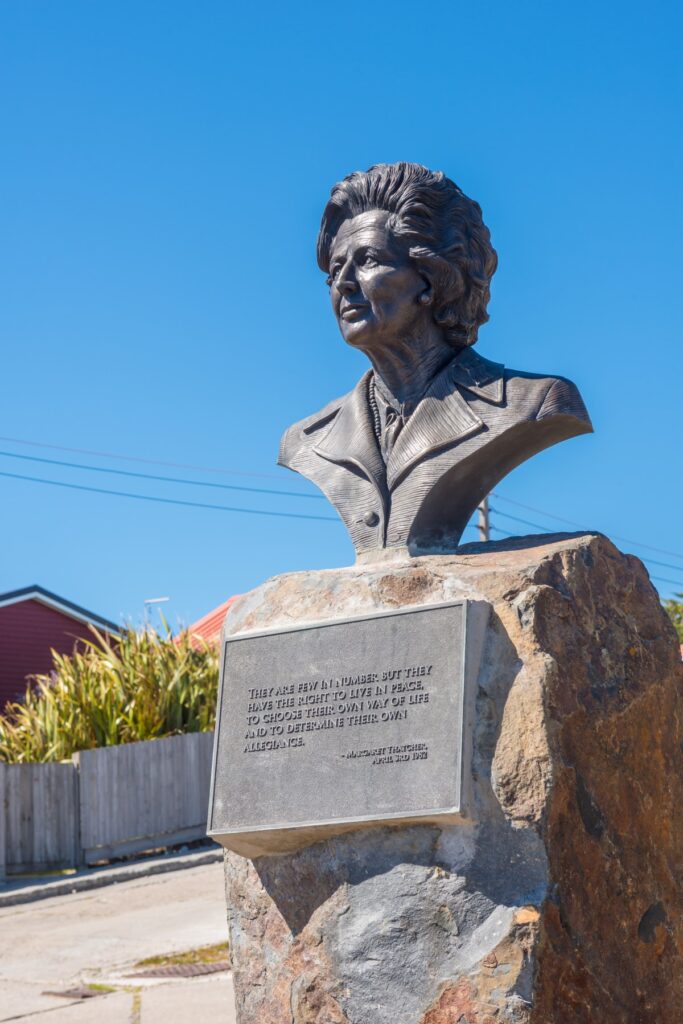
Some 50yds away is the bust of Margaret Thatcher, prime minister at the time of the Argentine invasion, and largely held responsible for the decision to send the task force to regain control of the islands.
Government House
Originally built in 1845, Government House has been regularly extended, improved or just generally altered over the years. Every governor and his wife seem to have added their own touch to the building.
Each spring, when the gorse hedges are in bloom, this is a very picturesque situation in the lee of the macrocarpa trees. The conservatory at the front of the house is home to one of the most prolific grapevines on the islands. The house itself, though not open to visitors, is full of all manner of memorabilia from throughout the ages.
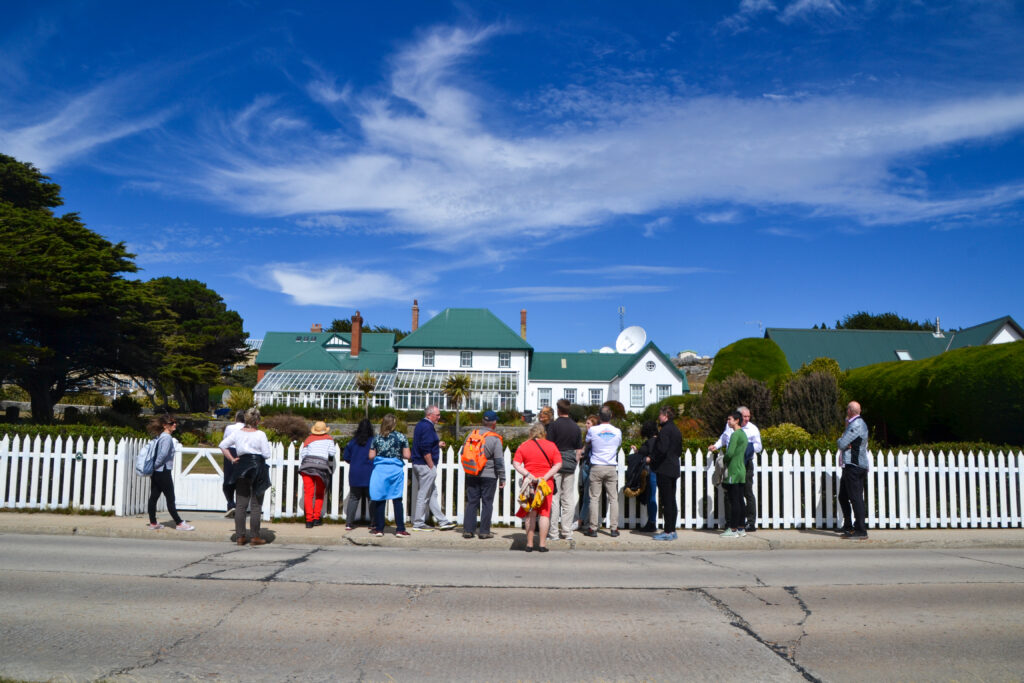
Outside the west entrance are a pair of brass guns cast in 1807, and elsewhere there is a harpoon gun that was presented by a South Georgia Whaling Station and a shell that is supposed to have come from the German cruiser Leipzig. The bullet holes still visible in the walls mark the most dramatic period in the history of this building, which suffered during the invasion and subsequent recapture of Stanley from the Argentinians.
1914 Battle Memorial
This monument commemorates the Battle of the Falklands fought on 8 December 1914, in which the British Squadron under the command of Vice Admiral Sturdee destroyed the German Squadron under Vice Admiral Graf Von Spee. A public holiday on the Falklands was declared on this date and every year there is a parade and a ceremony, which includes a display by the Royal Air Force and the Royal Navy.
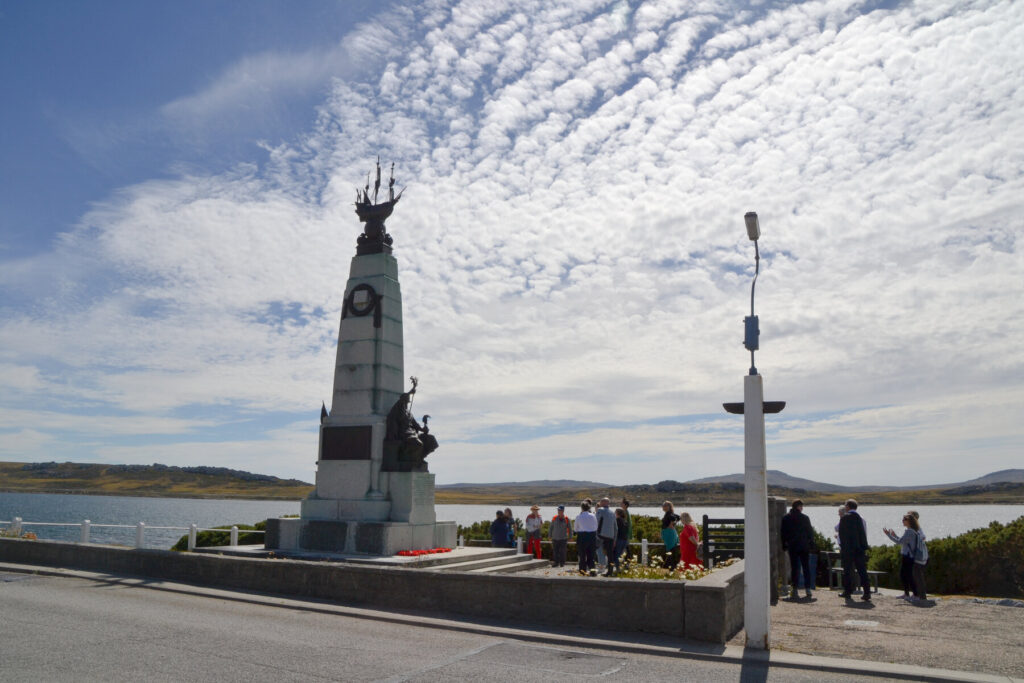
The memorial was paid for by public subscription and was first unveiled on 26 February 1927. Between SURE’s headquarters and the memorial is a memorial wall built in 2014 to commemorate the centenary of the two battles at sea in World War I. There are three plaques on the wall, detailing information about the two battles and the people involved.
Shipwrecks
The wreck of the Jhelum is one of the largest hulks still visible in Stanley but is now very much reduced. The ship lies at the end of a very rickety walkway known as Packe’s Jetty opposite Sullivan House. This three-masted barque, built in 1849 in Liverpool, spent most of her working life plying between Europe and South America.
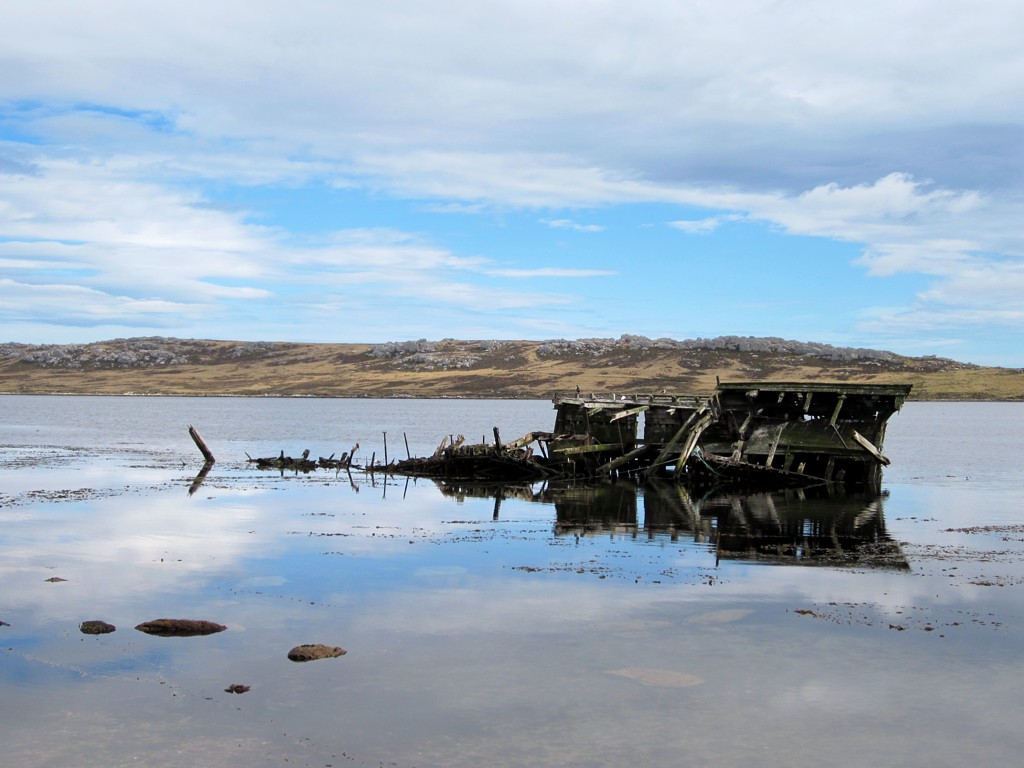
The hulk of the Charles Cooper lies a short distance offshore opposite the West Store, the largest shop on the islands. The Charles Cooper was an American ship, dated 1856, which arrived in Stanley leaking badly on 25 September 1866 on passage from Philadelphia to San Francisco with a cargo of coal. This is one of the best preserved of the hulks in Stanley Harbour, thanks to its alloy roof.
Another wreck lies just inshore of the Charles Cooper, the Actaeon, or what remains of her. This ship was built in New Brunswick in 1838 and put into Stanley in 1853, on her way from Liverpool to San Francisco with a cargo of coal. She had been beaten back while trying to round Cape Horn and had put into the islands for repair but was scuttled after a survey found she was unseaworthy.
Victory Green
The grassy lawn along Ross Road is known as Victory Green. The mast displayed in the middle of the green is the mizzen-mast of the SS Great Britain, which lay for many years in the outer harbour at Sparrow Cove before being transported to Britain in the 1970s.
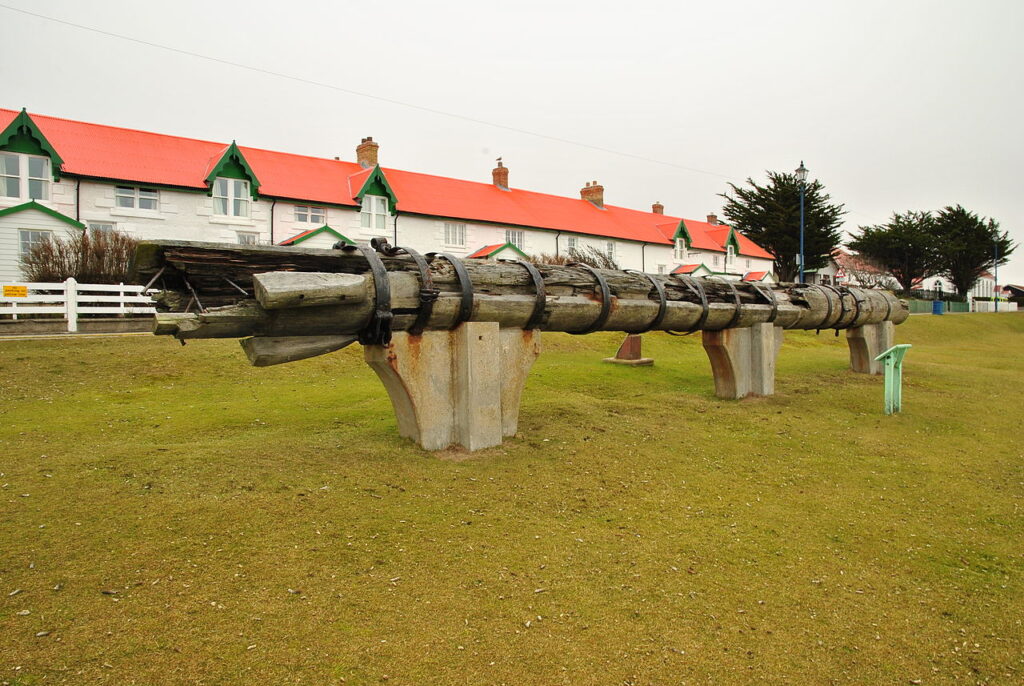
The four old cannons spaced out along the green originated from Port Louis, the original capital of the islands. The other guns are 19th-century Hotchkiss guns, which are fired on celebration days and to salute visiting ships. From this vantage point it is possible to look over the water to the northern banks of the harbour and see the names of four ships spelt out in white stones on the dark vegetation: Beagle, Barracuda, Protector and Endurance.
Christ Church Cathedral
Christ Church Cathedral and its whalebone arch must be one of the best-known, most-photographed buildings in the islands. It is the southernmost cathedral in the world and for part of its history
was the main cathedral for the missionary diocese of South America.
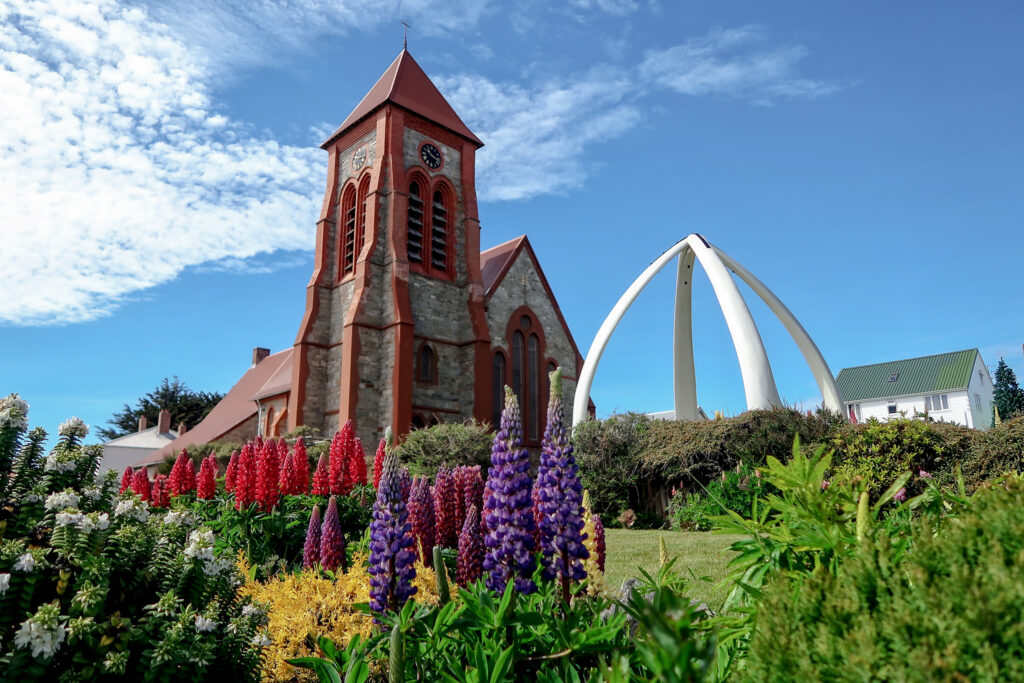
Consecrated in 1892 and finished in 1903, it has remained in use to this day. The whalebone arch, situated next to the cathedral and made from the jawbones of two blue whales, was presented to the islanders in 1933 by whalers from South Georgia. The arch and the cathedral were renovated in 1991.
Shopping in Stanley
Stanley is home to a number of gift shops with a wide range of Falkland- and Antarctica-themed items. Each shop has a mix of locally produced items, such as jewellery, knitwear, calendars and coasters as well as some mass-produced T-shirts, sweatshirts and other items. As expected, there is also a wide range of knitwear available, ranging from sweaters to unique hats and scarves.
Ross Road’s largest store, the Capstan Gift Shop, stocks soft furnishings, jewellery and birthday cards as well as a selection of the usual tourist gifts. It also has a good selection of books about the islands and further south. Almost opposite is the Harbour View Gift Shop, which is more aimed at the tourist market. If you’re looking for that quirky gift from the islands (one of many fridge magnets, a logoed baseball hat or a penguin-themed souvenir), this would be the place to go.
Practicalities
Eating and drinking in Stanley
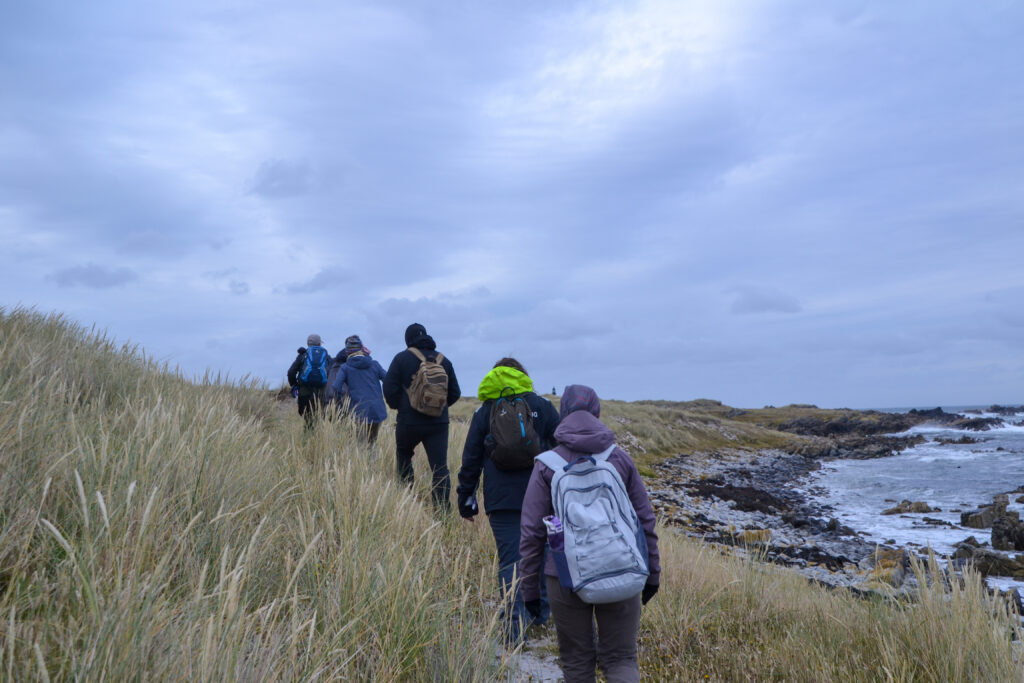
The Waterfront Kitchen Café – Situated a few mins’ walk from the public jetty, with super views over the harbour, this establishment serves a range of food – from light snacks through to full meals, & makes use of local meat such as lamb, beef & mutton. It can be very busy on cruise-ship days as, owing to its slightly elevated position, it’s a great place for people watching.
Where to stay in Stanley
Accommodation choices range from well-appointed hotels in Stanley to cosy cottages in the countryside. Guest houses and farm houses offer visitors the opportunity to meet local families and get a real feel for Island life.
Fresh home-cooked food is usually the order of the day and “honesty bars” in many locations allow you to relax and chat with others, to discuss the best wildlife spot of the day, the biggest fish caught and “the one that got away” or simply enjoy the privacy of reading a book in a quiet
Malvina House Hotel – The largest place to stay in Stanley, with uninterrupted views over Stanley Harbour. The hotel is named after Malvina Felton, the daughter of John James Felton who built the property in 1881.
The Waterfront Boutique Hotel – Located nearer the public jetty, this recently renovated building incorporates the Waterfront Kitchen Café & also has super views over the harbour. A Full English breakfast is included in the room rate & lunch & dinner can be taken in the café. Luxury rooms & junior suites are available, all are light & airy & local artworks decorate the walls.
Anchors Aweigh: This cosy studio apartment, you will be greeted by a modern and bright open plan room. The plush sofa is the perfect place to relax after a busy day of exploring or for curling up to watch the news or a movie. You can also catch up with friends and family using the complimentary Wi-Fi. Home is where the anchor drops.
Travel to Stanley
Stanley can be reached by land, sea or air. The majority of visitors who reach the capital do so via the cruise ships that call in at the islands. Smaller vessels can pass through the Narrows and anchor in the harbour alongside the floating dock known as FIPASS (Falkland Interim Port and Storage System) before being shuttled into town.
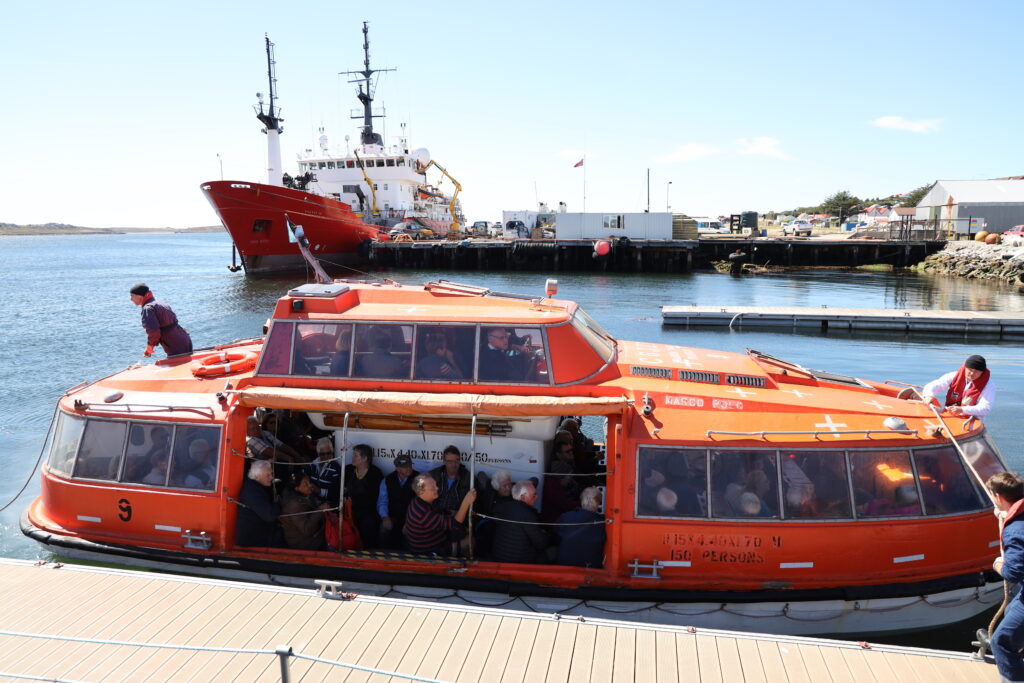
Although there are various overland routes to Stanley, most traffic uses the all weather road, which leaves the town to the south and leads on around the slopes of Sapper’s Hill. Visitors landing on the islands from overseas airports can only do so at Mount Pleasant. The airport at Stanley is used for internal flights by the Falkland Islands Government Air Service.
More information
To learn more about the Falkland Islands, visit the Falkland Islands Tourist Board website or check out Will Wagstaff’s guide: